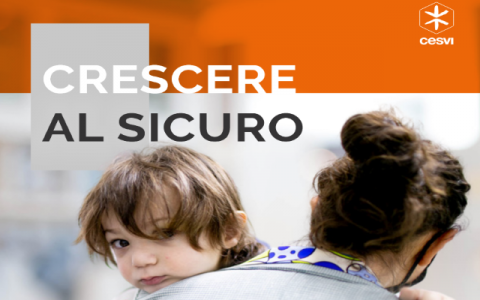
Child abuse remains a particularly serious problem in our society, with very serious consequences on the health of the children who suffer it and, in more general terms, on the whole community. The fifth edition of the Regional Index on child abuse in Italy, produced by the Cesvi Foundation, paints a picture of the phenomenon that reveals a situation of generalised suffering in which the most vulnerable pay the highest price, as always, starting with children.
"Formerly abused children," reads Cesvi's website, "become adults who live with a heavy burden of pain that they often pass on to their children, generating a vicious cycle of intergenerational transmission that only external intervention can interrupt. Violence against children is therefore a systemic phenomenon that cannot be traced back exclusively to family relationship dynamics but rather represents a serious public health problem before, during and after the pandemic and requires a comprehensive approach."
The Index, entitled Growing Up Safe, examines the vulnerability to child abuse in individual Italian regions through an analysis of the risk factors present in the area and the capacity of local administrations to prevent and fight the phenomenon through the services they provide. The result is a classification based on 64 indicators ranked against six different capacities that form the backbone of the Index: ability to care for oneself and others, to live a healthy life, to live a safe life, to acquire knowledge and understanding, to work and to access resources and services.
The 2022 edition also contains a focus on child safety during the Covid-19 pandemic, which reports data on the state of health, physical and mental, of young and very young, domestic violence and witnessing violence.
According to data from the police, the abuse of family members and cohabiting children also increased by 11% in 2020. In the first year of the lockdown, offences involving child pornography and online grooming also grew exponentially (+77%).
The focus also highlights the increase in violence against women: "data collected by the anti-violence and stalking number 1522 show a sharp increase in calls during the first phase of the lockdown. The place where violence most frequently occurs is the victim's home. However, the increase in reports is not matched by an increase in complaints. The police recorded a sharp drop in reports of abuse, stalking and sexual violence, a direct consequence of the confinement in the home and therefore the increased control exercised by the cohabiting partner." ISTAT estimates that about 50% of children witness violence, while 10% suffer it.
The Index shows a two-tier picture of Italy once again this year: the high level of crisis of Southern Italy is confirmed, which remains below the national average despite registering tentative improvements. The last four positions of the Index are held, as in the previous edition, by Campania (20th) Sicily (19th), Calabria (18th) and Apulia (17th). Emilia-Romagna is once again the region with the best capacity to deal with child abuse, with a final synthesis of risk factors and services (only in 2021 it yielded the top spot to Trentino-Alto Adige). They are followed by Trentino-Alto Adige (2nd), Veneto (3rd), Friuli-Venezia Giulia (4th), Tuscany (5th) and Liguria (6th), confirming their top positions.
"This year there are eight 'high crisis' regions, i.e. those areas where high environmental problems, represented by high risk factors, are not matched by a response from the support system: Campania, Sicily, Calabria, Apulia, Molise, Basilicata, Abruzzo and Marche. Among the "virtuous" regions – with low risk factors and a good level of services on the area – we find eight of the nine regions already present in the 2021 edition of the Index: Trentino-Alto Adige, Friuli-Venezia Giulia, Emilia-Romagna, Veneto, Liguria, Tuscany, Valle d'Aosta, Umbria. Piedmont, which was included last year among the "virtuous" regions, enters this year, together with Sardinia, in the cluster of "reactive" regions, i.e. those that respond to the high level of crisis in risk factors with services above the national average. Among the "stable" regions are Lazio and, like every year, Lombardy.
The Index is available on the Cesvi website, in the dedicated news item.
Other materials and news can be found on this site under the topic Violence against children and adolescents, which can be reached from the navigation menu "Topics."

